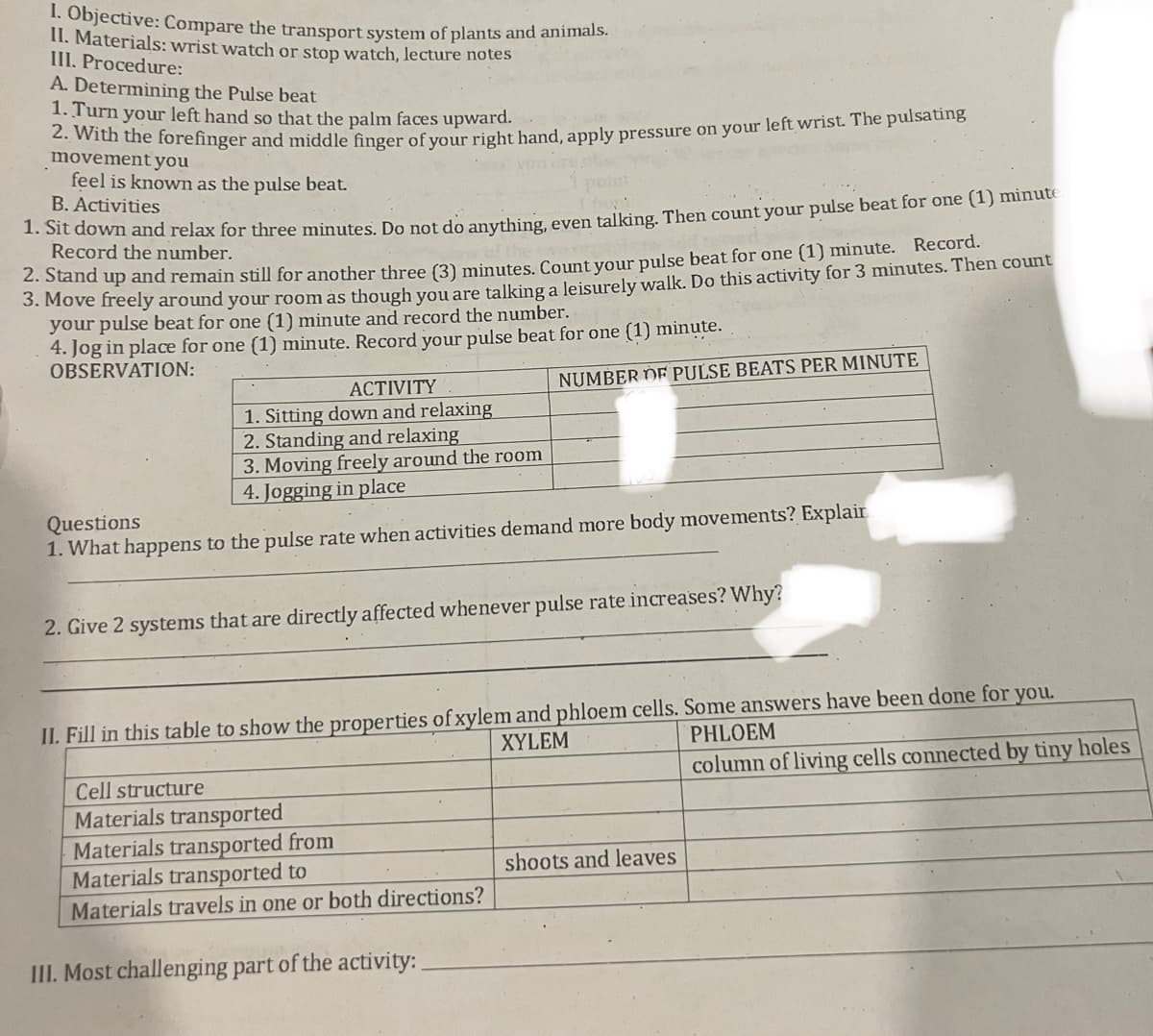1. Objective: Compare the transport system of plants and animals. II. Materials: wrist watch or stop watch, lecture notes III. Procedure: A. Determining the Pulse beat 1. Turn your left hand so that the palm faces upward. 2. With the forefinger and middle finger of your right hand, apply pressure on your left wrist. The pulsating movement you feel is known as the pulse beat. B. Activities 1. Sit down and relax for three minutes. Do not do anything, even talking. Then count your pulse beat for one (1) minute. Record the number. 2. Stand up and remain still for another three (3) minutes. Count your pulse beat for one (1) minute. Record. 3. Move freely around your room as though you are talking a leisurely walk. Do this activity for 3 minutes. Then count your pulse beat for one (1) minute and record the number. 4. Jog in place for one (1) minute. Record your pulse beat for one (1) minute. OBSERVATION: ACTIVITY 1. Sitting down and relaxing 2. Standing and relaxing 3. Moving freely around the room 4. Jogging in place NUMBER OF PULSE BEATS PER MINUTE Questions 1. What happens to the pulse rate when activities demand more body movements? Explair 2. Give 2 systems that are directly affected whenever pulse rate increases? Why? II. Fill in this table to show the properties of xylem and phloem cells. Some answers have been done for you. XYLEM Cell structure Materials transported Materials transported from Materials transported to Materials travels in one or both directions? shoots and leaves PHLOEM column of living cells connected by tiny holes
Plant Structure and Growth
Roots anchor, the plant, ingest minerals and water, direct water and supplements, and store food. These are two kinds of root frameworks.
Plant Life Cycle
Plants are part of the PLANT KINGDOM, which is one of the five kingdoms of life. Plants are divided into smaller classes based on common characteristics. Certain characteristics are shared by all plants. They are made up of a large number of cells. They also make their own food through a chemical process called photosynthesis, which involves the use of water, carbon dioxide, and solar energy. They pump life-giving oxygen into the air as a by-product.
Life Cycle of Plants
All the organisms that belong to the Kingdom Plantae are known as plants. They are multicellular and eukaryotic and can synthesize their food by photosynthesis, known as autotrophic organisms. They are classified based on certain characteristics, such as the plants bear flowers; some have only naked seeds and do not contain flowers. Some plants neither have seeds nor flowers, such as ferns and mosses.
Plant Morphology and Anatomy
The study of life and organisms is biology. The cell is recognized as the basic unit of life by biology. From ancient Greek, biology is recognized. Modern biology deals with the recent developments in Science.

Step by step
Solved in 4 steps




